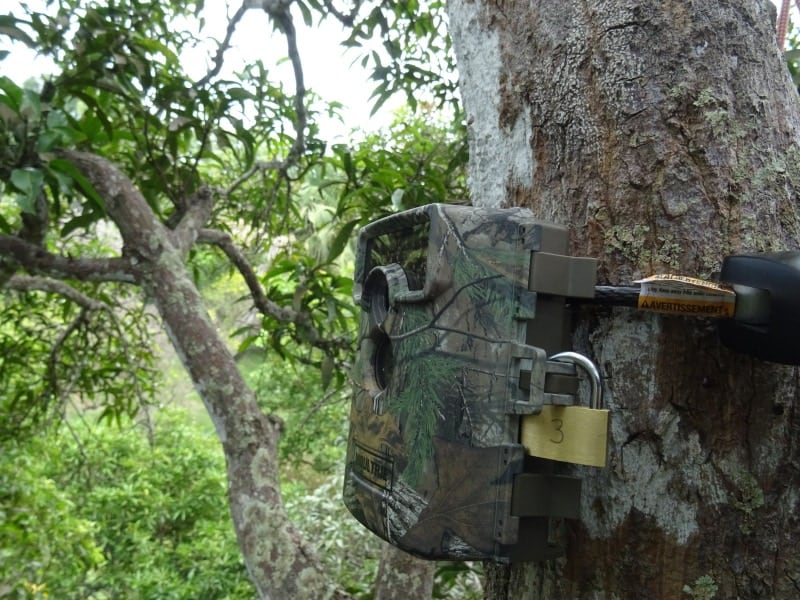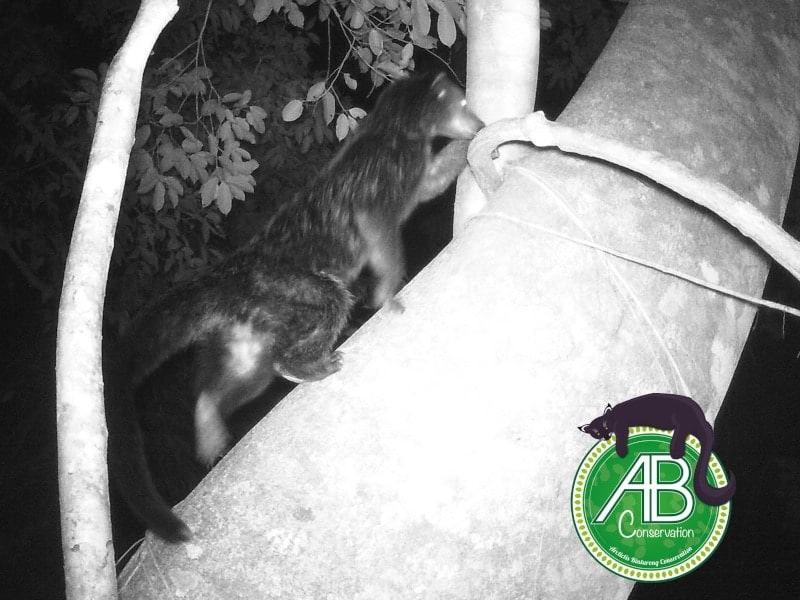Climbing trees to study the elusive bearcat
The bearcat is not a bear nor a cat, but a peculiar arboreal civet. Bearcats, or binturongs, live in the treetops in Southeast Asian forests, which makes them hard to observe and study. Yet, a team of French conservationists set up a new approach to study them.
The bearcat or binturong (Arctictis binturong) is an odd civet species living in large primary forests of Southeast Asia. Because of its appetite for fruits, the bearcat plays an important role in seed dispersal.
Although the bearcat is endangered and listed as Vulnerable by the IUCN (International Union for Conservation of Nature), very little data is available on this species. This lack of knowledge can be explained by the difficulties for researchers studying the elusive animal. Indeed, living between 15 and 25 meters high in the trees, binturongs do not make it easy. Yet, as recently reported in Mammalia, a French team may have found a solution to study them.
How to reach the bearcats?
“The whole team followed a three-day training with French specialists of tree-climbing”, explains Pauline Kayser, president of the non-profit organization ABConservation, which led the research. “This allowed us to climb up to 20 meters high in the canopy to install camera-traps”. Those specific cameras are designed to be triggered by passing animals.

The researchers obtained more than 40 pictures of bearcats over a two-year study period. This is by far the highest amount of detections of bearcats in the whole of Asia. However, it is impossible to identify each binturong individually, and therefore they cannot be counted nor their population size estimated. “They have black and grey fur and no pattern. Moreover, most of the pictures are taken at night. So, we have black and white pictures of greyish animals. It’s impossible to distinguish them”, explains Dr Agathe Debruille, veterinarian and scientific officer of the project.

Why should we do more research?
Other researchers in South America or Madagascar have already installed camera-traps in the canopy. Yet, this is the first time the method has been used to target the binturong. “We still need to collect a lot of information about binturongs before we can start an adapted conservation program”, states Dr Agathe Debruille. Hence the whole team hopes that this camera-trapping technique can be used in further studies to improve the knowledge about this species, especially its ecology, but maybe also to learn more about the size of its population. Bearcat populations have never been surveyed, which prevents an accurate assessment of how urgent it is to protect them.
“In addition, this technique could be used not only for the bearcat, but also for other arboreal species, such as monkeys, squirrels and birds. It has so much to offer, I am looking forward to its development”, Dr Agathe Debruille enthusiastically concludes.
If you are interested, learn more in the original article here: